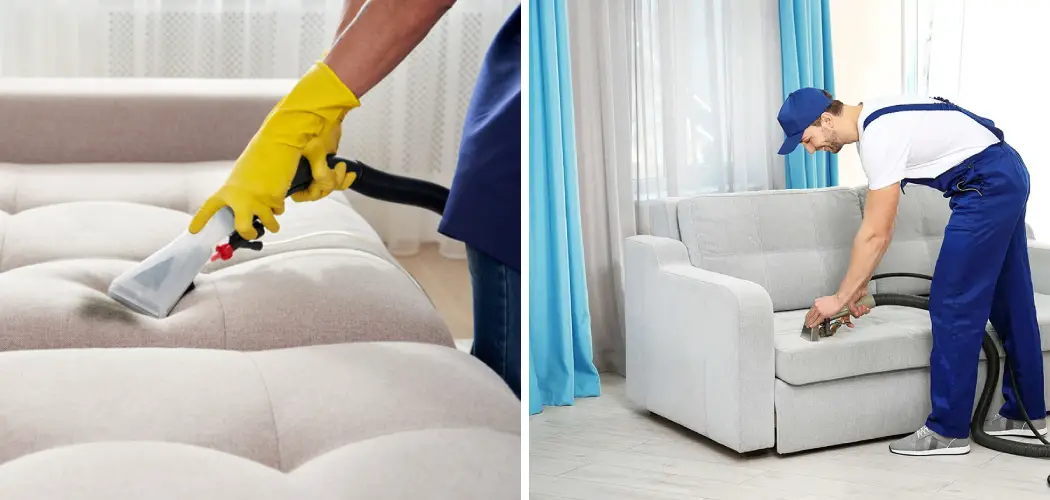Are you looking for an easy and effective way to keep your linen furniture looking clean and like new? If so, then we have the perfect solution! With a few simple cleaning tips, you can restore faded colors, remove stubborn stains, and extend the life of your furniture.
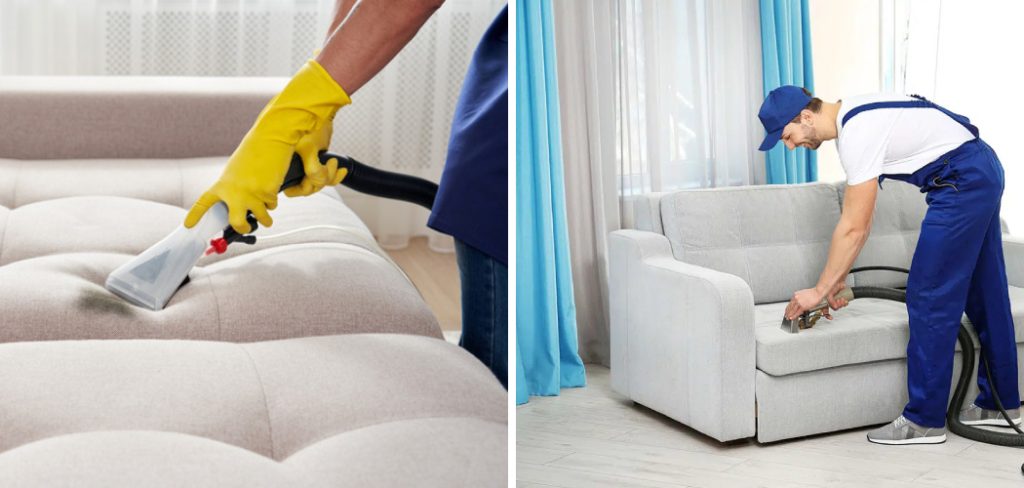
Linen furniture is an excellent addition to any home, as it adds a touch of elegance and sophistication. However, with regular use, it can also accumulate dirt and stains, which can make your furniture look dull and unappealing. This is why it’s essential to clean linen furniture to maintain its beauty and quality properly.
In this blog post, we will walk you through the process of how to clean linen furniture to ensure it looks its best when family or friends come over. So grab some cleaning supplies, and let’s get started!
What Will You Need?
Before we dive into the cleaning process, make sure you have all the necessary supplies on hand. Here’s a list of items you will need:
- Vacuum cleaner with upholstery attachment
- Soft-bristled brush
- Mild detergent or soap
- Distilled water
- White vinegar
- Clean cloths or microfiber towels
It is important to note that before cleaning, always check the manufacturer’s instructions and tags on your linen furniture for any specific care instructions or warnings.
10 Easy Steps on How to Clean Linen Furniture
Step 1. Vacuum the Furniture:
Start by vacuuming your linen furniture using an upholstery attachment. This will remove any loose dirt, dust, and crumbs accumulated on the surface. Be sure to vacuum all areas of the furniture, including the cushions and underneath them.
Step 2. Spot Test the Cleaning Solution:
Before applying any cleaning solution to your linen furniture, conducting a spot test is vital. Mix a small amount of mild detergent or soap with distilled water and use it to a hidden area of your furniture. Wait for a few minutes and then blot it with a clean cloth. If the color doesn’t change or bleed, it’s safe to proceed. This step ensures the cleaning solution will not damage or discolor your furniture.
Step 3. Apply the Cleaning Solution:
Using a cloth or sponge, gently apply the tested cleaning solution to the stained area of your linen furniture. Remember to work in a circular motion, starting from outside the stain and working your way toward the center to prevent the stain from spreading. Do not saturate the linen, as it can damage the fabric and padding. Always ensure to use a gentle touch, as harsh scrubbing can damage the delicate fibers of the linen.
Step 4. Blot the Stain:
After applying the cleaning solution, use a clean, dry cloth to blot the stain. Do not rub or scrub as this can cause the stain to spread or sink deeper into the fibers. Continue blotting until the stain is fully absorbed. This step can be repeated as necessary until the stain is completely removed. Remember to use a fresh section of the cloth each time to prevent reapplying the stain onto the furniture.
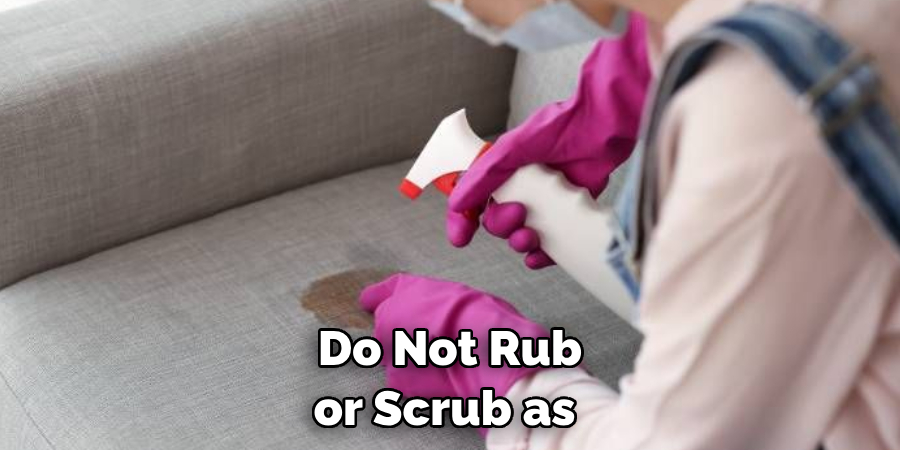
Step 5. Rinse and Dry:
Once the stain has been successfully removed, it’s time to rinse the area where the cleaning solution was applied. Use a damp cloth soaked in distilled water to rinse the area gently. Be sure not to over-wet the fabric as it can lead to water stains. Following the rinse, use a dry towel to blot the area and remove as much moisture as possible. Alternatively, you can also use a hair dryer in a cool setting to speed up the drying process. Ensure the area is arid before using the furniture to avoid any potential mildew growth.
Step 6. Neutralize Odors:
Sometimes, your linen furniture may still hold onto unpleasant smells even after a thorough cleaning. In such cases, a simple solution of equal parts white vinegar and distilled water can be used as a natural deodorizer. Lightly spritz this solution onto your furniture, taking care to keep the fabric neat. Then, let it air dry thoroughly. The vinegar smell will dissipate as it dries, taking other odors along with it. Always remember to conduct a spot test before applying this solution extensively.
Step 7. Brush the Fabric:
After completely drying your linen furniture, use a soft-bristled brush to brush the fabric gently. This helps restore the fabric’s original texture, especially after cleaning thoroughly. Brushing the fabric toward the grain can smooth out any roughness caused by cleaning, making your furniture feel soft. This step also helps remove any loose dirt or dust that might have settled on the surface during the cleaning process.
Step 8. Regular Maintenance:
Regular upkeep is the key to prolonging the life and appearance of your linen furniture. Make it a habit to vacuum your furniture at least once a week to remove dust and dirt before settling into the fabric. Also, rotate and flip removable cushions regularly for even wear and tear. Avoid direct sunlight on your furniture as it can lead to fading, and keep it away from heat sources that can cause the fabric to dry out and shrink. Remember, prevention is always better than cure!
Step 9. Seasonal Deep Cleaning:
In addition to regular cleaning and maintenance, doing a deep clean of your linen furniture at least once or twice a year is recommended, particularly during spring or fall cleaning. This process involves thorough vacuuming, spot cleaning, and odor neutralization, ideally using professional-grade cleaning products or professional upholstery cleaners. Deep cleaning helps to address any underlying dirt or stains that might have been overlooked during regular cleanings, further ensuring the longevity and aesthetics of your linen furniture.
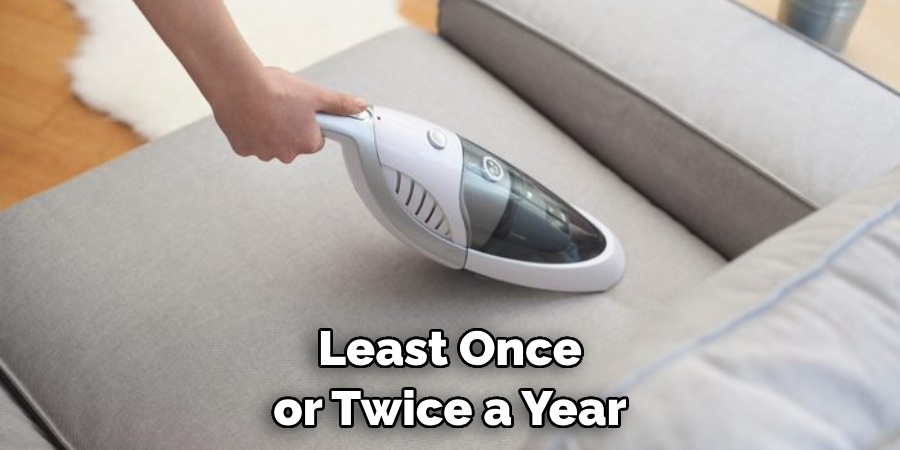
Step 10. Seek Professional Help When Necessary:
Despite your best efforts, there might be stubborn stains or deeply embedded dirt that you need help to clean on your own. In such cases, don’t hesitate to call in professional upholstery cleaners. Professionals have the knowledge, experience, and specialized tools and cleaning solutions that can effectively clean your linen furniture without causing any damage. This step is particularly recommended for antique or expensive linen furniture. Remember, timely professional cleaning can extend the life of your furniture and keep it looking fresh and beautiful for years to come.
By following these simple steps, you can maintain the cleanliness and appearance of your linen furniture while prolonging its life.
5 Additional Tips and Tricks
- Avoid Bleach: Even though bleach is a powerful stain remover, it’s not recommended for linen furniture as it can severely damage the fibers and cause discoloration. Instead, use a mild soap or detergent for cleaning.
- Tackle Spills Immediately: Keep spills from sitting on your linen furniture for long, as they can set into the fabric and become more difficult to remove. Blot any spills immediately with a clean, dry cloth to minimize staining.
- Use Protective Covers: Use slipcovers or protective covers for your linen furniture, especially if you have pets or small children. These covers can prevent dirt, stains, and pet hair from entering your furniture and can be easily removed and cleaned.
- Avoid Sunlight and Heat: Linen furniture can fade and dry out when exposed to direct sunlight or heat for prolonged periods. Keep your furniture in a cool, shaded area to preserve its color and texture.
- Check the Cleaning Label: Always check the cleaning instructions on your linen furniture before cleaning. Some fabrics may require specific cleaning methods, and using the wrong products can damage or discolor your furniture. If in doubt, consult a professional for advice.
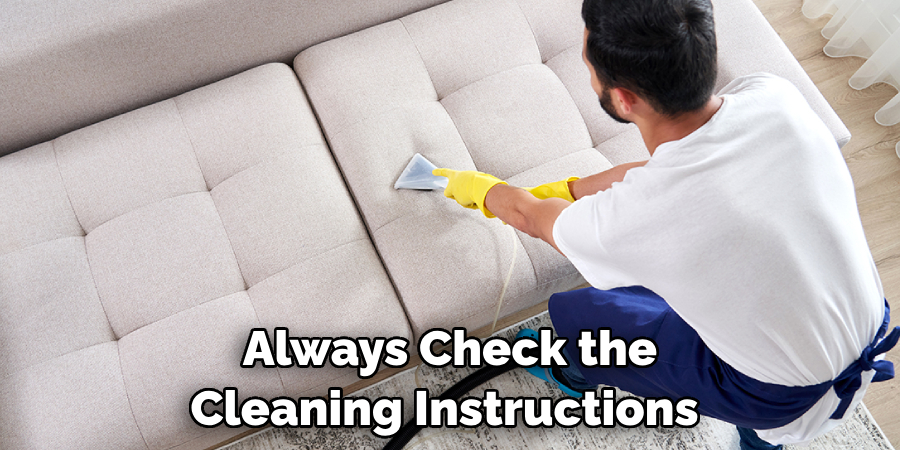
Following these additional tips and tricks can further enhance your linen furniture’s cleanliness and longevity.
5 Things You Should Avoid
- Using Harsh Chemicals: Certain cleaning products contain harsh chemicals that can damage linen fibers and cause discoloration. Always opt for mild, fabric-safe soaps and detergents, and avoid anything with bleach or harsh cleaning agents.
- Rubbing Stains: Rubbing a stain can cause it to spread and penetrate deeper into the fabric. Permanently blot stains gently to lift them out of the fabric instead of rubbing or scrubbing.
- Waiting to Clean Spills: The longer a spill sits on your linen furniture, the harder it will be to remove. Take your time–tackle spills and stains as soon as they happen.
- Overwetting the Fabric: Too much water can lead to water stains or mildew growth on your linen furniture. Always use a damp cloth for cleaning and ensure the fabric is thoroughly dried afterward.
- Ignoring Care Labels: Your linen furniture will have care labels that detail specific cleaning instructions. Ignoring these guidelines can lead to unintentional damage. Always follow the care instructions provided for your particular piece of linen furniture.
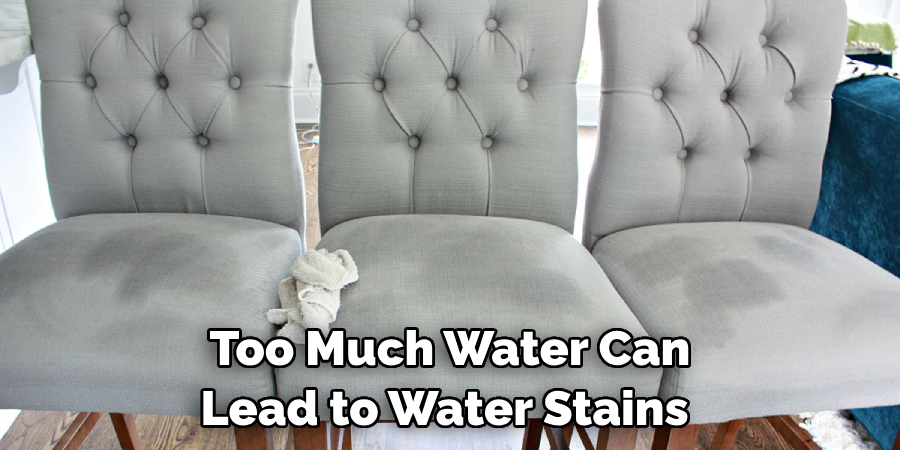
By avoiding these common mistakes, you can ensure that your linen furniture stays in pristine condition for years.
Conclusion
No one wants to sit on a couch that’s covered in dirt, crumbs, and dust. Keeping linen furniture upholstery clean will ultimately help extend its life and keep it looking beautiful for years. Although cleaning this fabric type may be tricky due to dust and stains settling deep into the weave, the steps outlined above can make a world of difference!
Hopefully, the article on how to clean linen furniture has provided you with some helpful tips and tricks to keep your furniture looking fresh and clean.
With the right cleaning products, methodical maintenance, and some elbow grease, your linen furniture will look its best with frequent cleaning. So don’t forget—take the time to clean your linen furniture regularly—you won’t regret it!
You Can Check It Out Clean Pottery Barn Slipcovers

